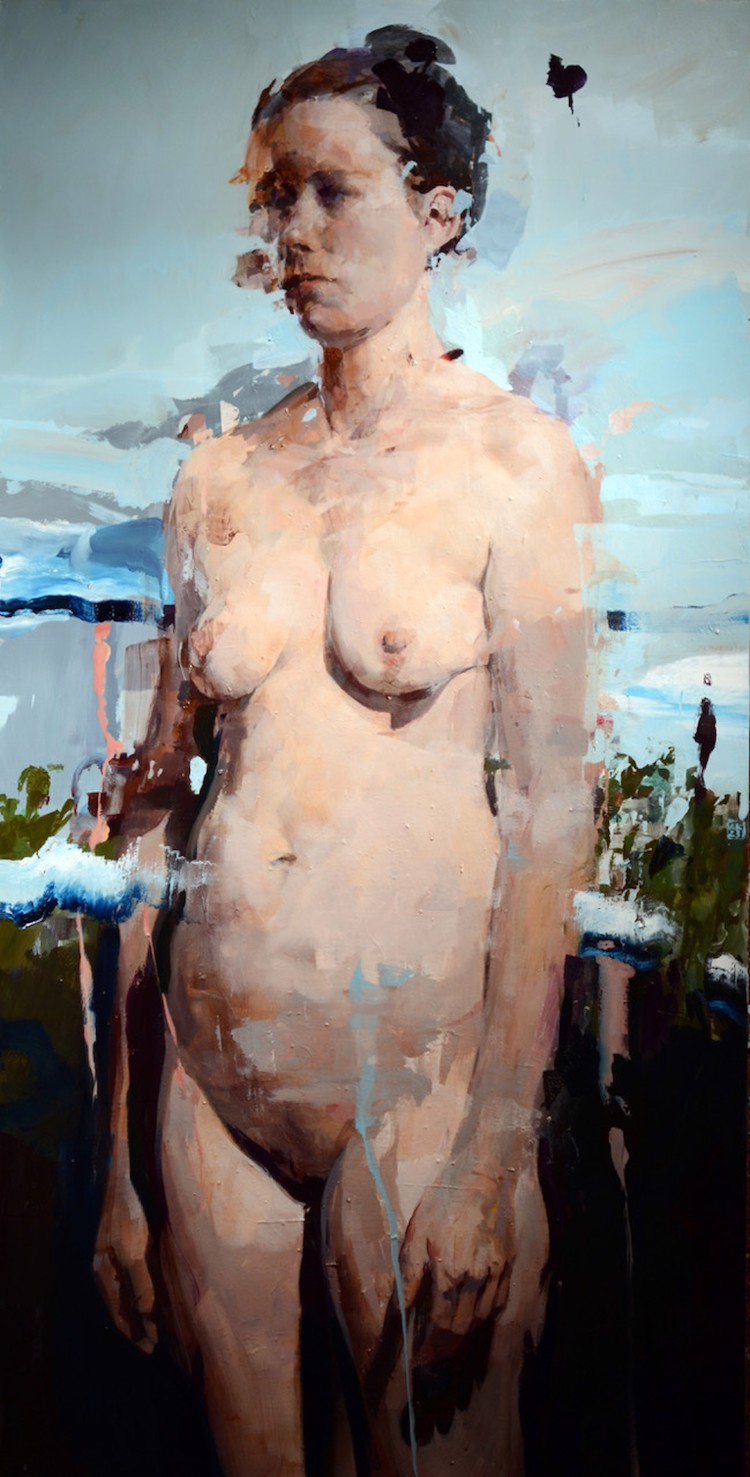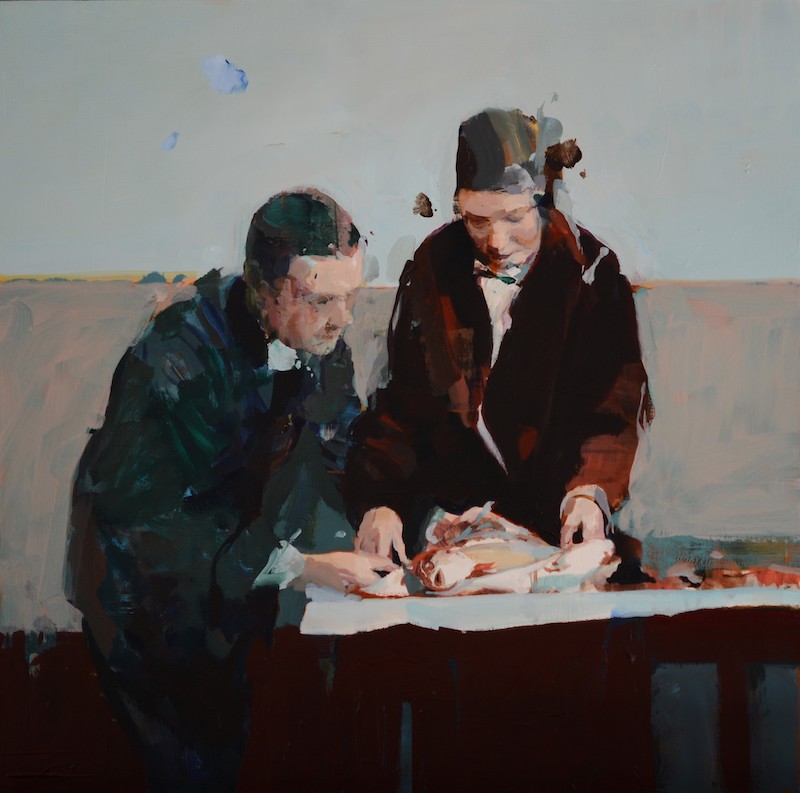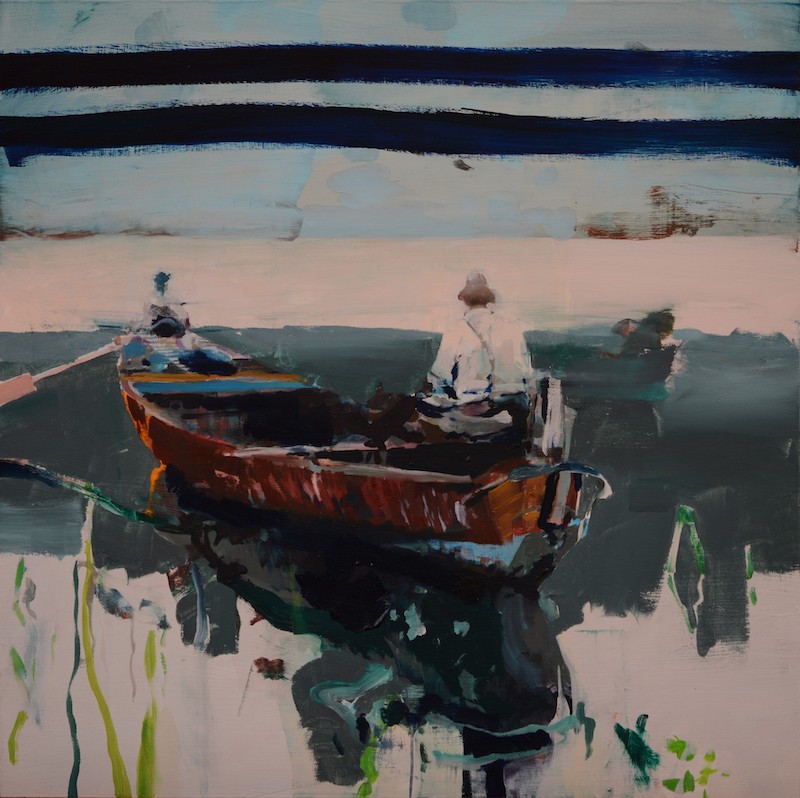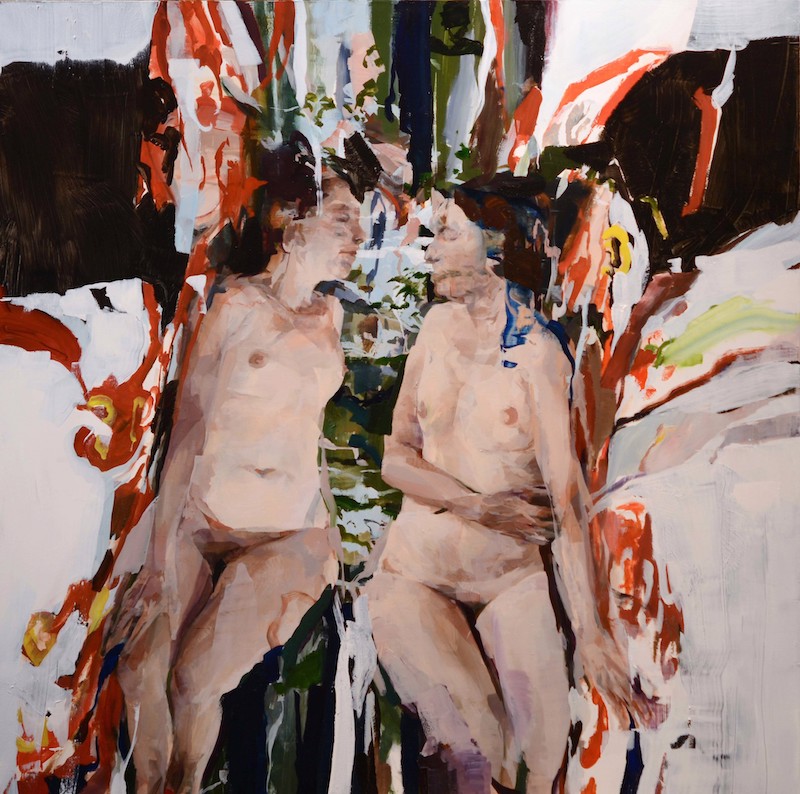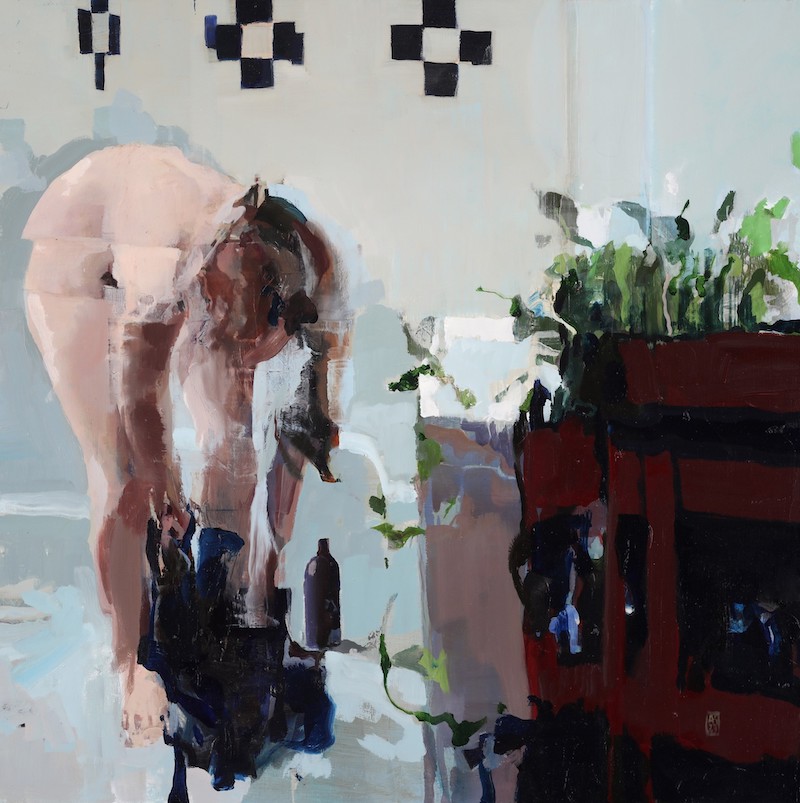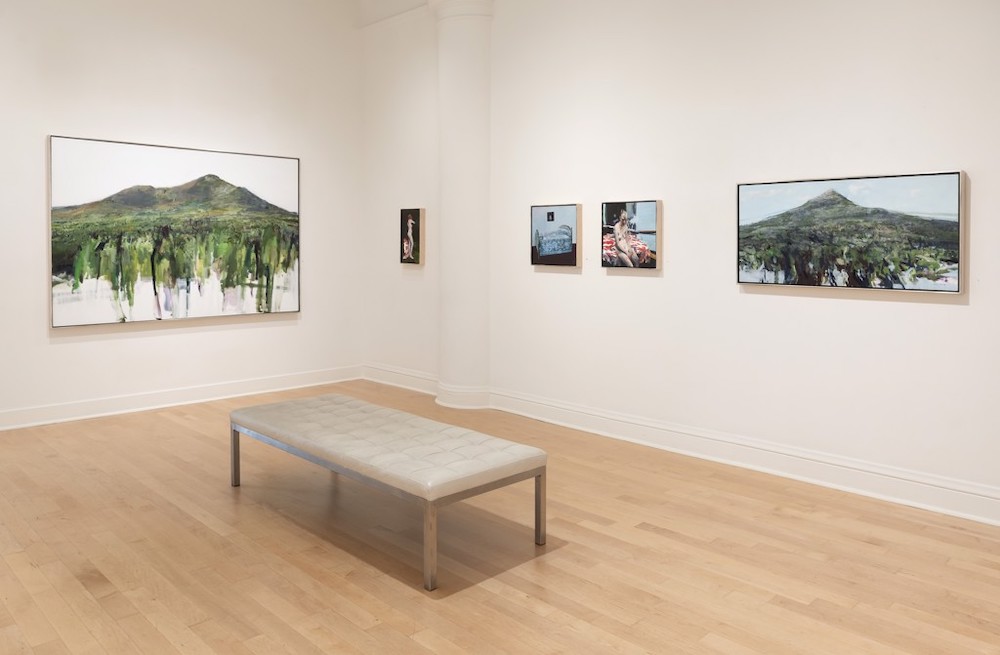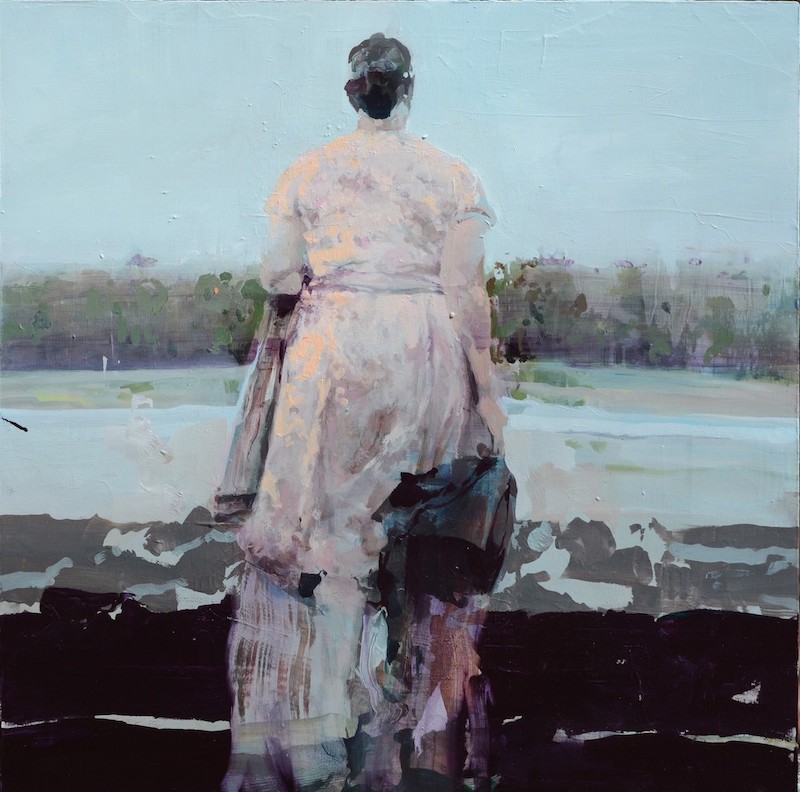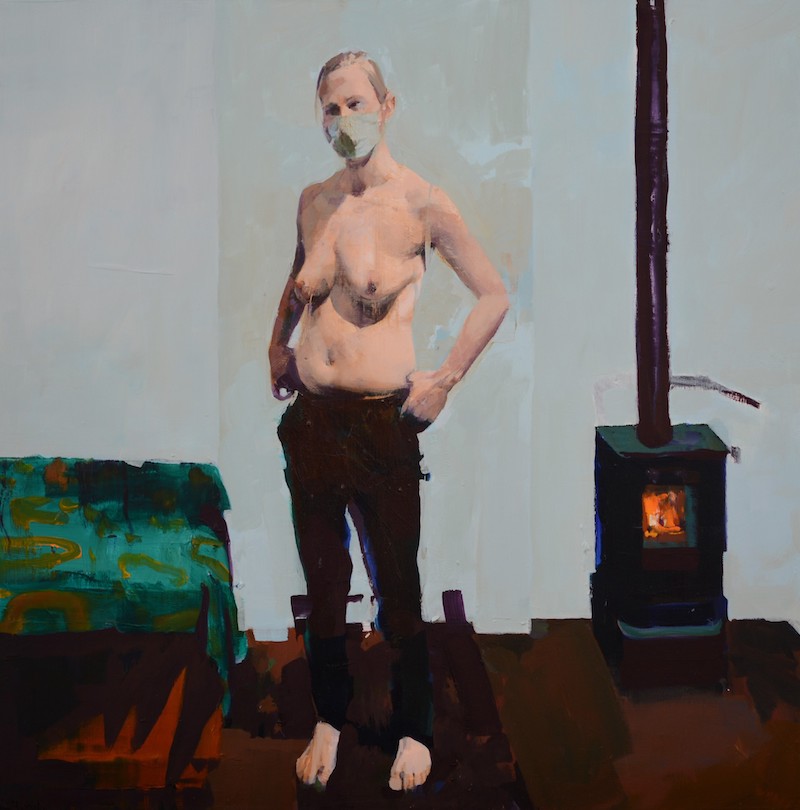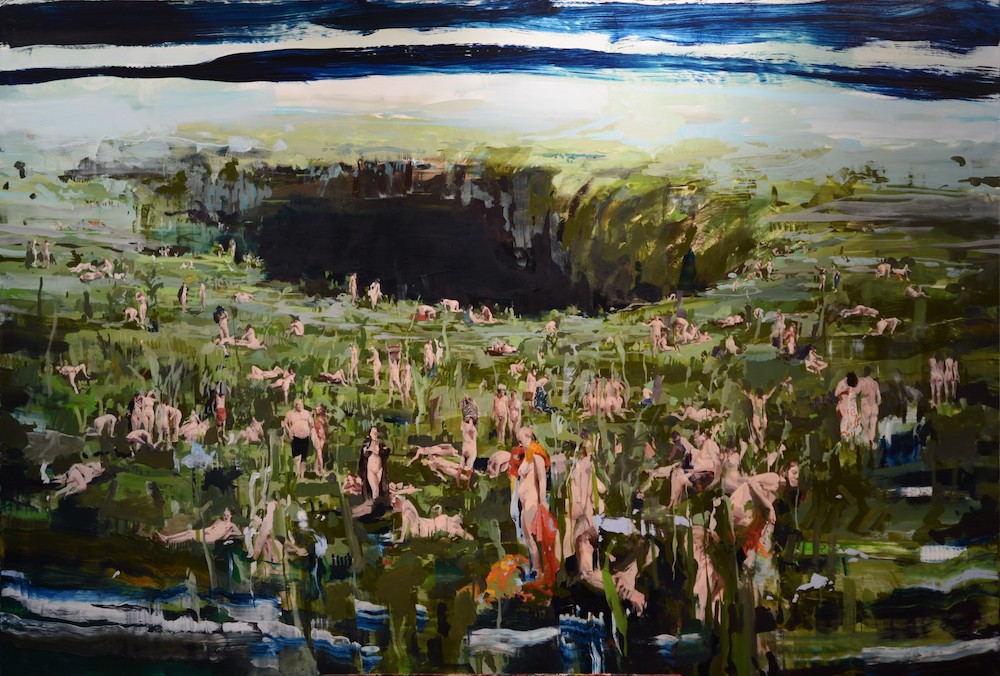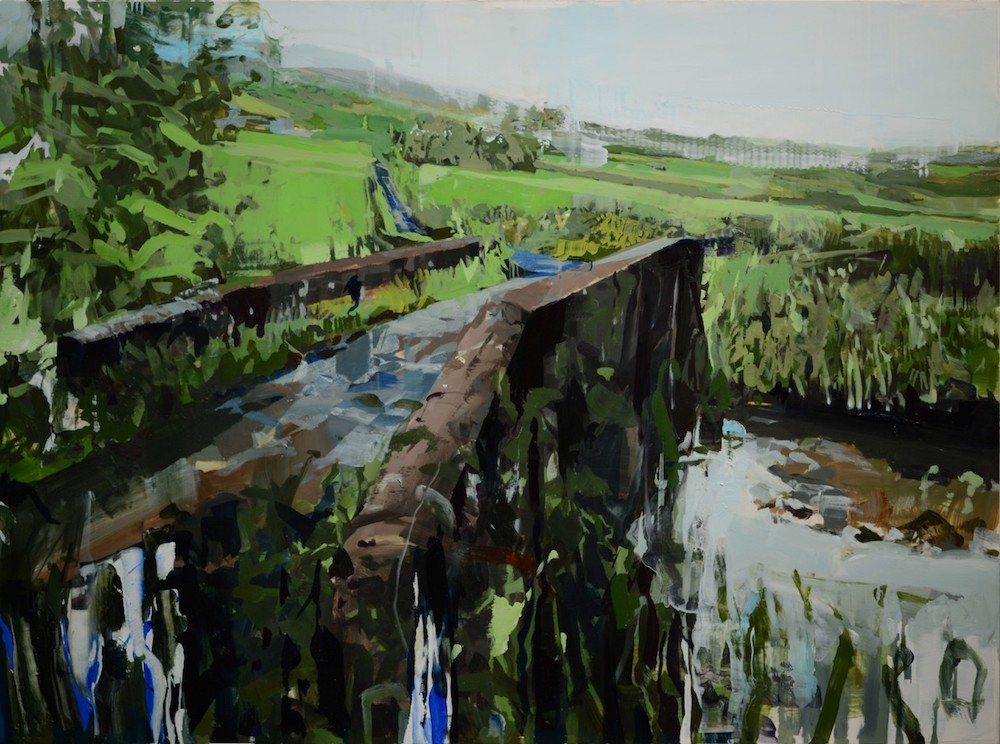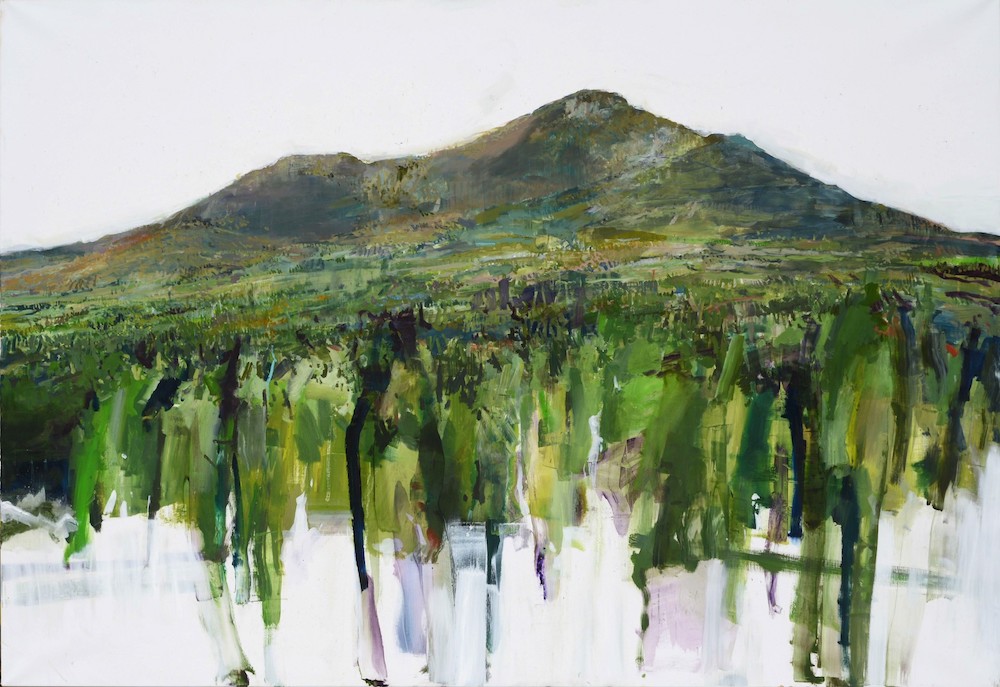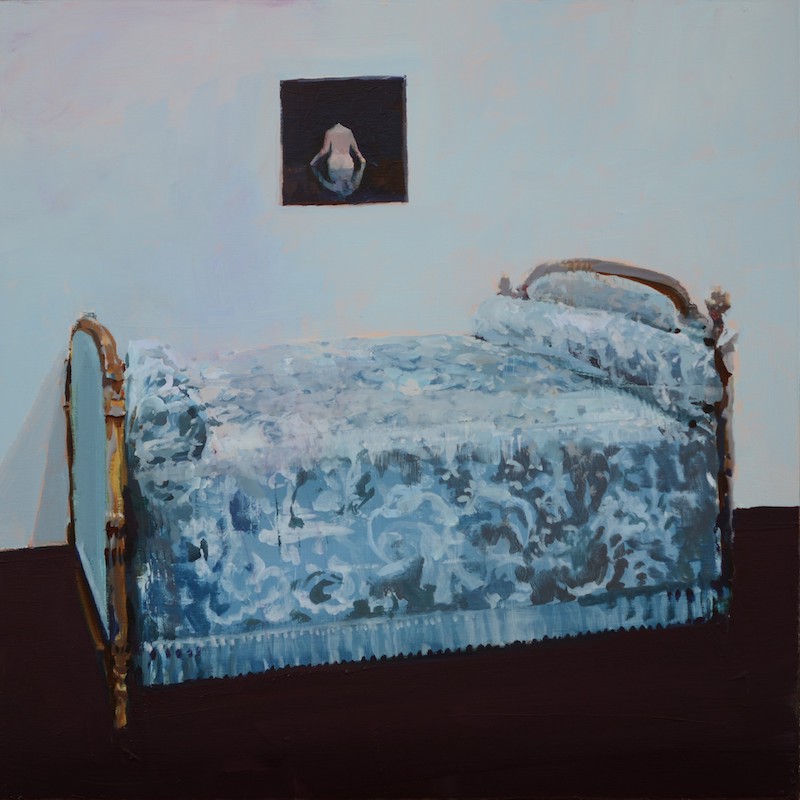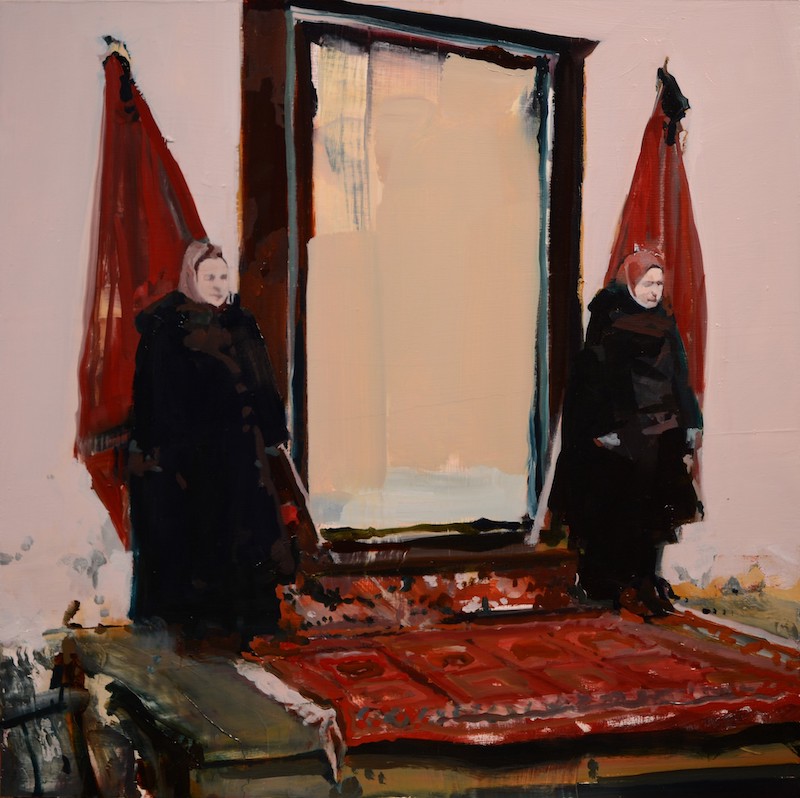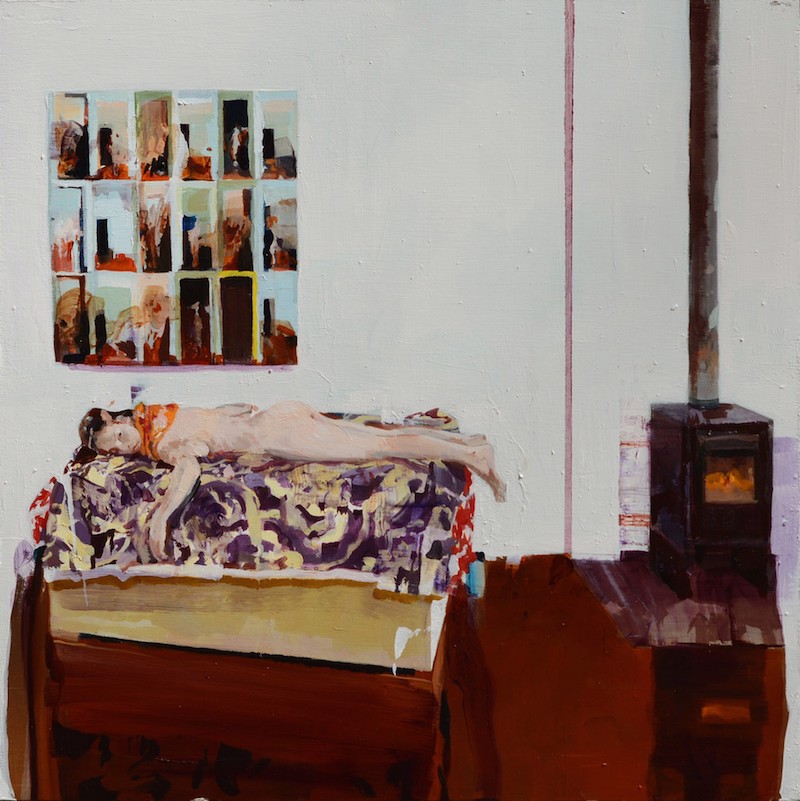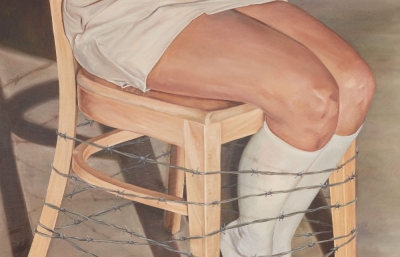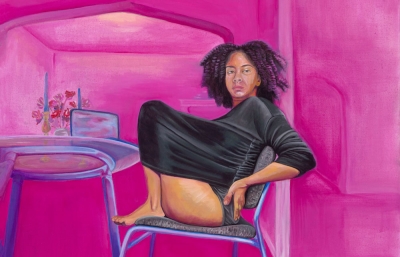Looking at paintings is a complicated social phenomena. A person walks into a gallery with white walls and looks at pictures rendered with pigment on an underlying ground affixed to some kind of support. Usually there is a recognizable image depicted on a canvas. Even if abstracted or nonobjective the viewer looks for messages to extract; we look for figures or landscape elements. The human gaze in this prevalent framework expects the artwork to tell us a story and to connect with our lives.
Alex Kanevsky’s work stands in opposition to this paradigm; both the making of story pictures and the concern for what a viewer derives from the experience. He resists the overused trope that painting is a language and disavows the resulting expectations placed on him. Sure, painting can be a vehicle for expression and figurative works can satisfy a desire to equate the depiction of objects with meaning. But what if the painter isn’t trying to tell a story or make a political or moral statement? 
Kanevsky is primarily a painter in conversation with feelings and mood, rather than a presenter of narrative images. Viewers can find something that resonates in his practice for themselves, but looking for a linear narrative is not what these paintings are about, though this remark is complicated by Kanevsky’s utilization of descriptive titles and graphic representation. In “Fishing” (oil on canvas, 18 x 18 inches, 2022), for instance, one sees delineated elements that seemingly impose the expectaion of storytelling; two men in a boat embarking on a fishing trip. However, the real truth of the painting is the sentiment it expounds to us through its amalgamation of various qualities: rubbed out other boats and an assortment of visual possibilities, the rendering of water with large meandering swaths of paint, the sky or horizon represented with two large dark blue horizontal bands of paint, and a sprinkling of colors in what appears to be a somber or quiet atmosphere. We can feel the moment, the hesitancy or expectancy; the sheer beauty of the stand-still occasion. Likewise, in “Fish Oversight” (oil on panel, 18 x 18 inches, 2022) we see a man and a woman engaged in a rather mundane affair: unwrapping a paper package containing an entire fish. Again, a viewer looking for narratives will focus on their possible relationship: is the handling of a dead fish a metaphor for something? But there’s a care and expectancy and even excitement as they uncover something that is a source of sustenance or their shared respect for a once living thing.
Rather than expecting Kanevsky’s work to give us meaning, the viewer should look to how he presents fragments of things he has experienced; or invented imagery he believes satisfies his desire to relive a feeling. Though arguably constructed they are as true to an emotion as if he had rendered something more traditionally precise. At his core, he is a painter of demonstrative sentiments, or as he has previously said, emotional climate. Kanevsky uses painting as a way to convey or re-experience the way he once felt. Notable passions such as happiness, sadness, anger, or boredom can bluntly attempt to convey a sentiment through language. But anyone who speaks more than one language will relate the experience of thinking of a word in one language, when speaking another one; conjuring up a word that better describes something they are feeling in that moment. In this way, Kanevsky still must confront how to define the climate a painting emanates. Elucidation will remain elusive as the numerous words in any spoken language barely approximate the variety of feelings that are possible.
Disavowing the idea of language in the paintings does not mean that Kanvesky isn’t searching for form. Color, spatial arrangement, and how they propel emotion are the very ingredients of his process. Even the act of erasure in the paintings suggests uncertainty and underscores a measure of revelation. Certainty isn't being sought as much as truth. Movement is a strong theme in these works. Nothing seems static here. The blurriness and lack of defined lines seems mostly about capturing the essence of the variability and impossibility of static nature. Since movement is constant, even with seemingly stationary things, being able to see the revisions or competing lines demarking an object or person, emphasizes this quality in a way that perfection cannot. Kanevsky rubs out portions of a painting or relies on layering to cover over areas that fail; he does so purposefully leaving visual cues that give a nod to time passage. He is inviting the viewer to participate in his adjustments, all of which are essential details in what makes his paintings successful. Ultimately it fosters the reengagement with an elusive moment and feeling, even if it is unfolding as he paints.
Some of the paintings give the impression of being unfinished, but only at first glance. Kanevsky doesn’t have to paint something that is obvious to him; in this way he is purposefully leaving areas unresolved. They are finished because he understands how paintings shift over time and he prefers to keep that energy activated. He solves problems in the composition for himself, and that is enough. The mere fact that he is capable of painting something with more definition or at all isn’t necessarily of great interest to him. The viewer is compelled to agree as they experience these pictures..
In “Long Hours” (oil on panel, 18 x 18 inches, 2022) Kanevsky has painted a seated nude woman on the edge of a bed draped with an elaborate red pattern bedspread, sitting in contemplation. The upper right area of the composition is largely desolate, with a horizontal red line offering some spatial context suggesting an interior angle. The entire upper third of the painting background seems unfinished, yet it is precisely as it should be. Evocative of thought and an almost abandonment of being seen, the figure sits with her shoulders hunched over in perfect repose. We have all felt this way; as if exalting a moment of peace; entirely without concern for anyone else, the woman seems to barely breathe.
In “C.B. Taking Aim” (oil on board, 20 x 11, 2023) Kanevsky purposely left a few red paint brush marks to suffice for what is likely a cloth or robe element, though it is not attached to the figure's hand. Even the headband or scarf worn around the woman’s head isn’t fully realized. Again, Kanevsky is revealing that he has achieved all that he wants to with the figure as is; the dark sentiments of the surrounding composition embellish the felt quality.
Both of these paintings contain various painting passes as Kanevsky slowly layers his work, readjusting lines and contours until there isn’t anything left to be done. Kanevsky isn’t nostalgic for where the painting begins. The pictures look as if there has been a long process, a struggle, even. They are intense because they have been through a cataclysmic event and the resulting picture is an artifact of that engagement with acute observation, memory, and emotion each playing a role in revelation.
Kanevsky’s landscapes feel as if painted by someone embedded within the scene, making it familiar and convincing. Kanevsky places the viewer right into the foliage in contrast to how a plein air artist might render a scene from a distance; noticeably disconnected from it as if peering at the scene rendered. The viewer can’t help but feel Kanevsky has placed them standing before a portal waiting to step into it. A viewer will experience this precipice vantage point in “Big Mountain” (oil on canvas, 58 x 84 inches, 2022), “El Tigre” (oil on wood, 24 x 96 inches, 2022), and “Mt. Neffin 1, Ireland” (oil on mylar mounted on wood, 24 x 31.25, 2023).
Various elements create a cocktail of evocative feelings. Paintings are fused together with images and spatial ideas; not necessarily existing in life, but approximating the lived experience. In fact, it seems as if Kanevsky merges together otherwise disparate imagery that originated from different temporal moments, into a single canvas to trigger competing sensations. These are not simply vestiges of painting, but feel like the logical consequence of his process. The distinction being, he must pull the aesthetic and compositional choices together if they are to adhere to the social conventions attending a finished artwork. But even here things reveal themselves: he leaves parts less-worked underscoring his certainty that he could go further if he wanted to.
Importantly, Kanevsky knows when to conclude working on a painting. This exhibition exalts a painter insightful enough to stop because to do otherwise would have damaged the painting. Whatever lack of certainty one sees is thus vital to the composition. In this way, Kanevsky makes the most important revelation: painting is less about forcing an outcome than it is about experiencing completion in areas of unresolved give and take. Endemic to his process is understanding restraint and a seeking of the moment of truth when the painting had to be a certain way; when it couldn’t be otherwise. They are complete because doing anything else will erase or detract from what the painting is able to convey.
It is a mistake to believe the presentation of emotion can be separated from visual perception; they are not separate domains insofar as Kanevsky utilizes the one to arrive at the other. It may not be a language, but it does convey something. Intense emotional experiences are remembered strongest. Kanevsky utilizes visual memory; a library of images and color to help create the sensory moment he is rendering. He is under no illusion that he is painting reality. Truth in painting isn’t about depicting something exactly; Kanevsky knows it must also rely on interpretation and intuition.
Disavowing linear narratives and seeking a way to display emotional climate is why Kanevsky is his own painter. While others see the benefit of being part of an art movement or working within a unified painting style; Kanevsky reverts back to his own solitary place, one filled with intentionality and a desire to feel something profound. Connoisseurs of good painting will relish this exhibition. It is a particularly exciting offering by one of America’s most probing painters; one unconcerned with where he fits into some perceived aesthetic cannon.—Matt Gonzalez
https://dolbychadwickgallery.com/



